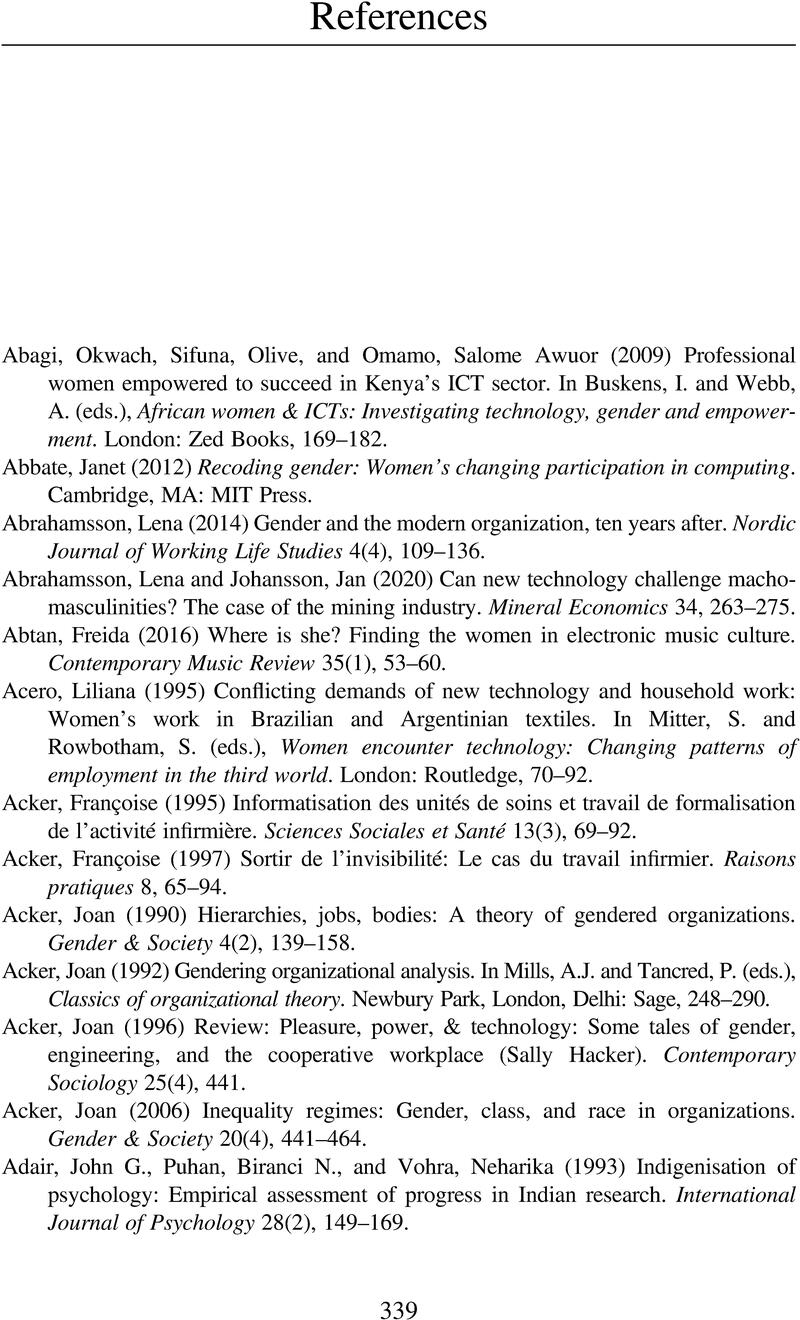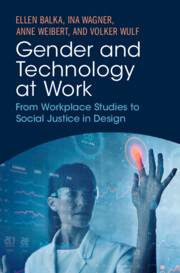References
Published online by Cambridge University Press: 28 March 2024
Summary

- Type
- Chapter
- Information
- Gender and Technology at WorkFrom Workplace Studies to Social Justice in Design, pp. 339 - 384Publisher: Cambridge University PressPrint publication year: 2024



